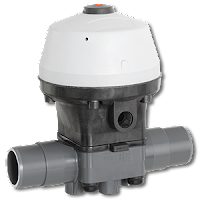- Contact Us
- Call Us
- Menu
Industrial process control, as a field of endeavor, covers an incredibly broad range of applications, all highly specialized in their own way. The control and handling of fluids is a prevalent activity in process control, leading to a wide variety of valves from which to choose for your application. Figuring out which flow control valve will best meet the needs of a particular application requires a detailed assessment of the physical elements to which the valve will be exposed, and under what conditions it will need to operate. In other words, know your process fluid, know your operating environment. A solid understanding of your process will make valve selection a simpler task, since there will likely be a small segment of your requirements able to be fulfilled by only one or two valve types.
When referring to valve types, common terminology generally describes the means utilized to control the flow. Some prevalent valve types, though certainly not an exhaustive list, include ball, plug, butterfly, diaphragm, gate, needle, and globe. Each of these basic designs have characteristics that make them more suitable than others for certain application conditions. Let’s look at diaphragm valves.
A diaphragm valve controls fluid flow through the movement of a flexible membrane, unsurprisingly called a diaphragm. Numerous means can be employed to apply force to the diaphragm and a seal is created when the membrane compresses against a targeted portion of the valve body. A prominent feature of this valve type is the isolation, by the diaphragm, of the valve operation mechanism from the fluid. Two general body styles are available, referred to as weir and straight through. The weir design requires less extensive movement of the diaphragm than the straight through type, resulting in a longer expected life for the diaphragm. The straight through style, when open, provides little obstruction to the fluid flow and may be more suitable for some media.

Consider your process environment, consider your process fluid, consider if a diaphragm valve will provide the performance you need. I always recommend taking the time to discuss your application with a valve specialist. Their extensive knowledge base and application experience will enhance your solo valve selection performance.